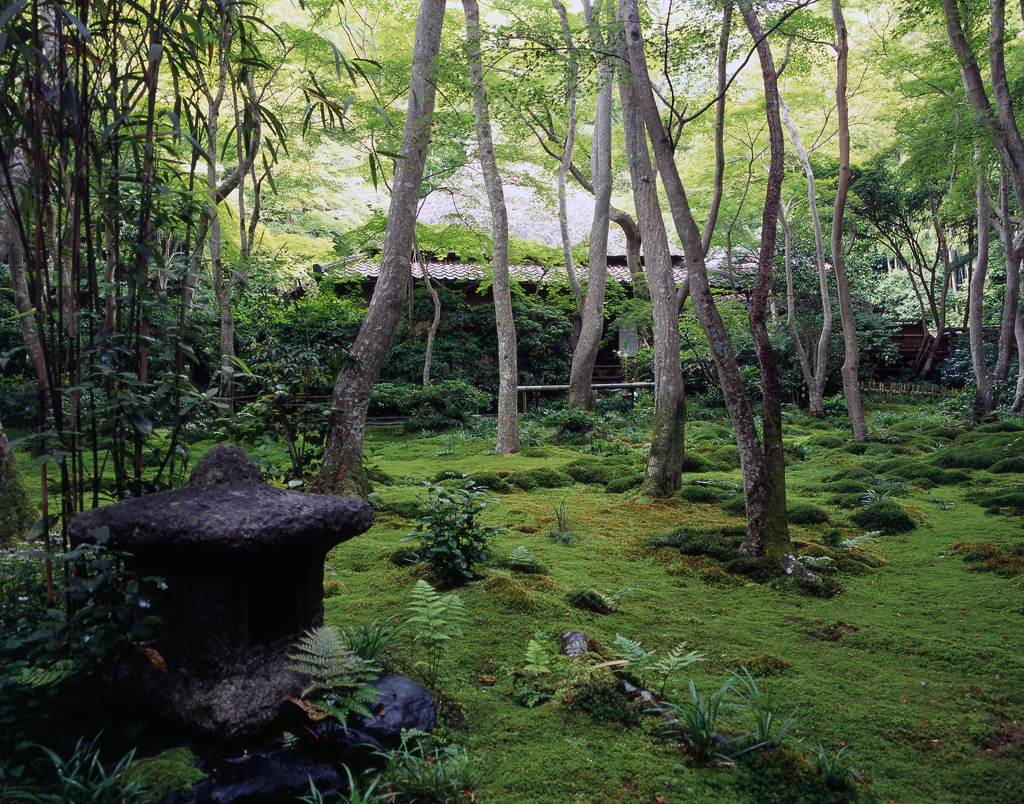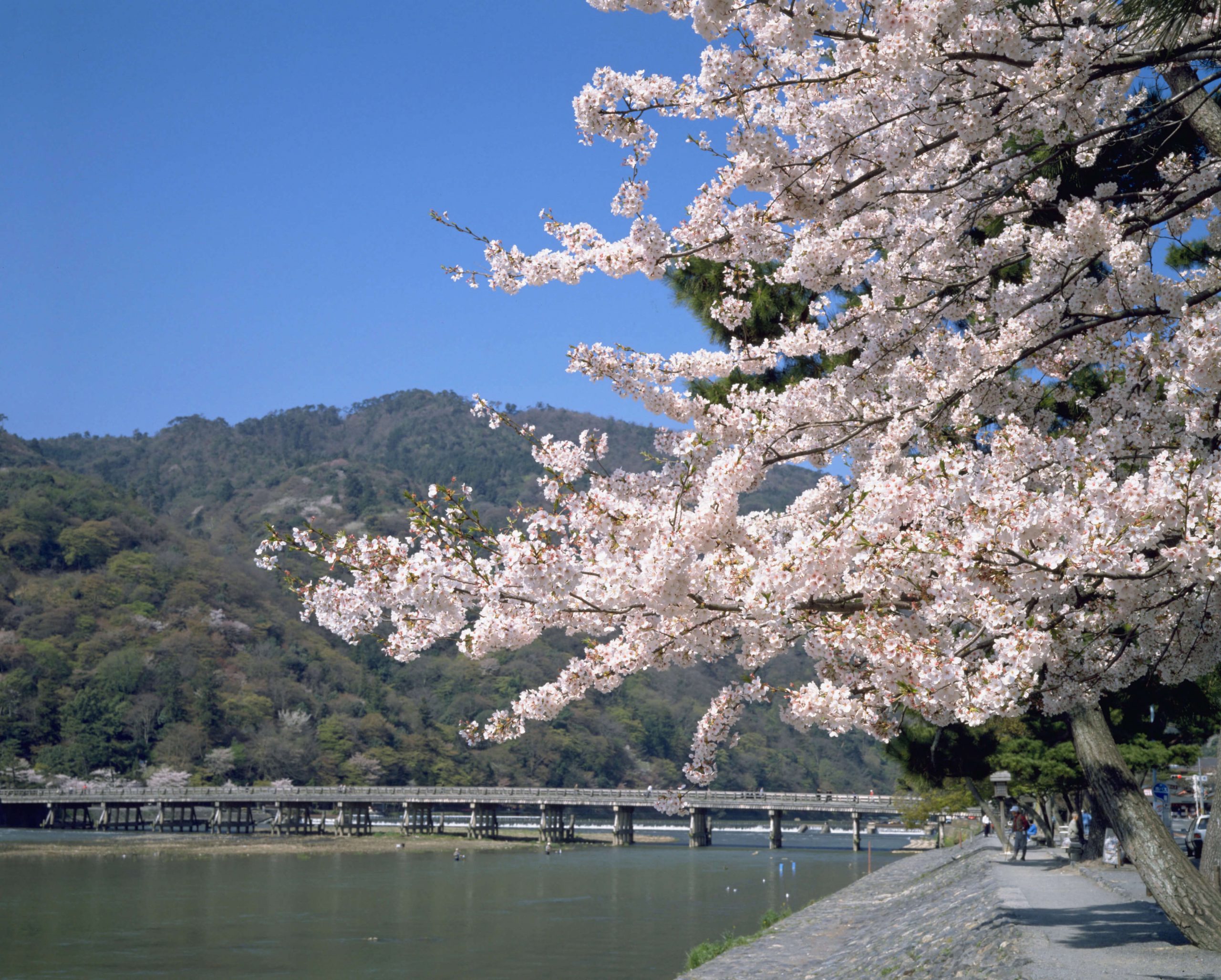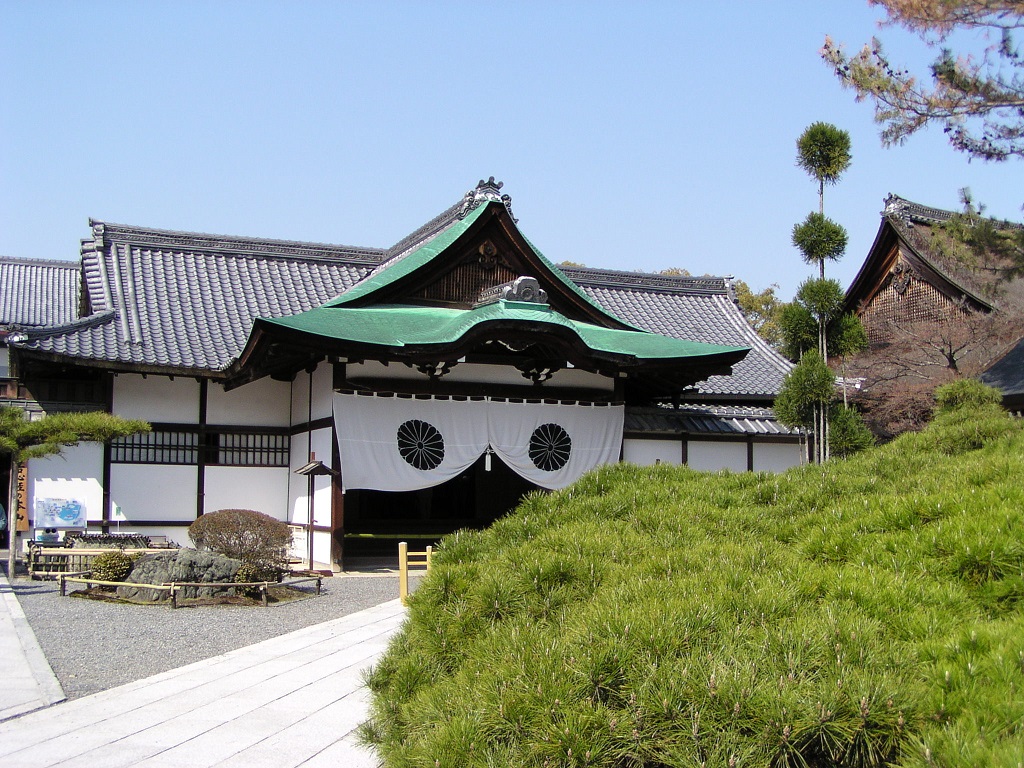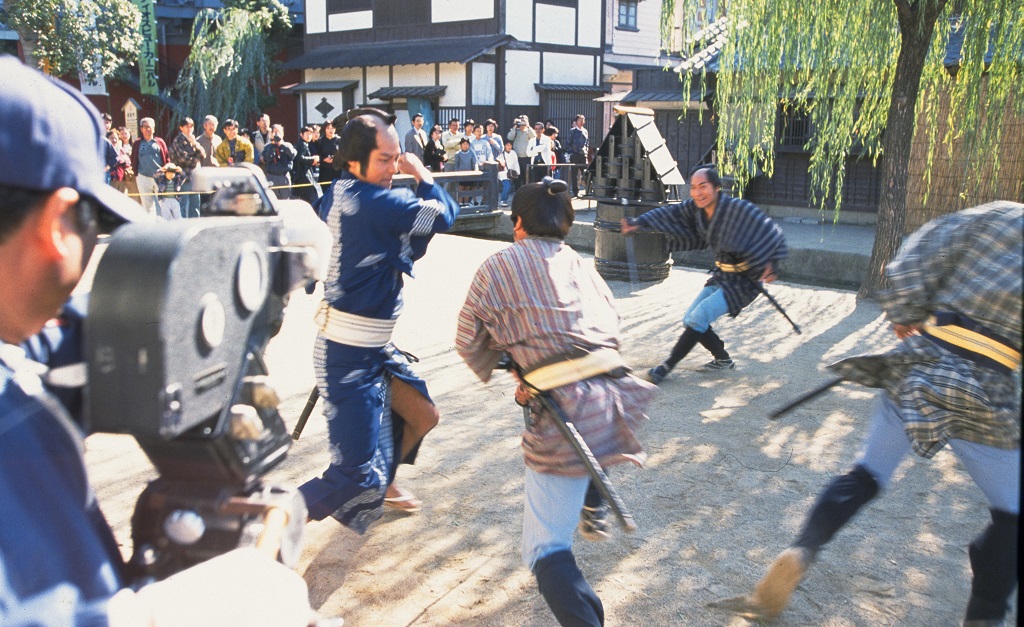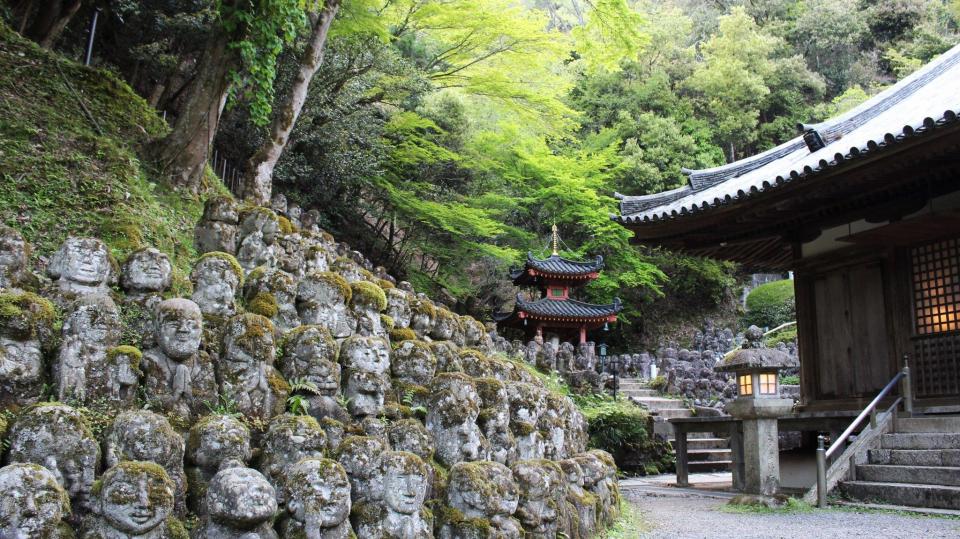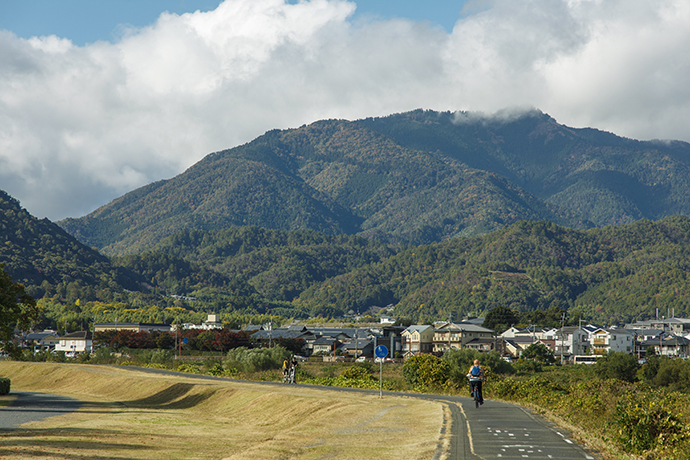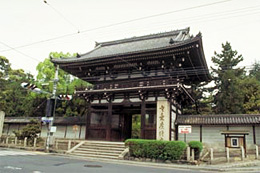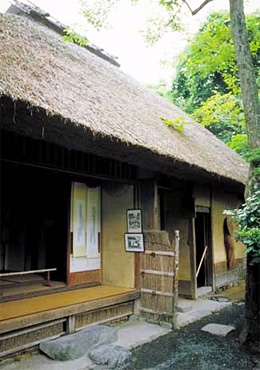
Rakushisha, the “Hut of Fallen Persimmons,” is a famous landmark in the world of haiku poetry. It is a simple hermitage, its walls made of clay, its roof of thatch, in what was once a remote part of Kyoto. Less remote today, it still possesses a sense of tranquil seclusion. On the grounds are stone tablets inscribed with haiku, while ink-brushed poems hang on the walls inside.
The hermitage was created by Mukai Kyorai, chief disciple of Matsuo Basho, the great master of haiku. Kyorai went into seclusion at the age of 27, and a few years later built this retreat. The house takes its name from an occasion, recorded in Kyorai’s works, when he woke up to find that the persimmons of almost forty trees on his property had fallen in a storm overnight. Basho himself visited Rakushisha, and wrote his famous diary “Saga Nikki” during his stay there. It closes with a famous poem which evokes Basho’s sad feelings of leaving his friend’s home:
「五月雨や色紙へぎたる壁の跡」(samidare ya shikishi hegitaru kabe no ato)
“Summer rain
on the wall traces of
torn poem cards”
In the house are tasteful monuments to Kyorai and Basho, as well as an old straw raincoat and hat set to hang on the wall in a gesture indicating that “the host is in.” Kyorai’s grave is outside on the grounds. Many people come to Rakushisha to savor its tranquility and to try their hand at writing some haiku, including contemporary masters of the art.
Basic Information
- Address : 20 Hinomyojin-cho Ogurayama Saga Sakyo-ku, Kyoto
